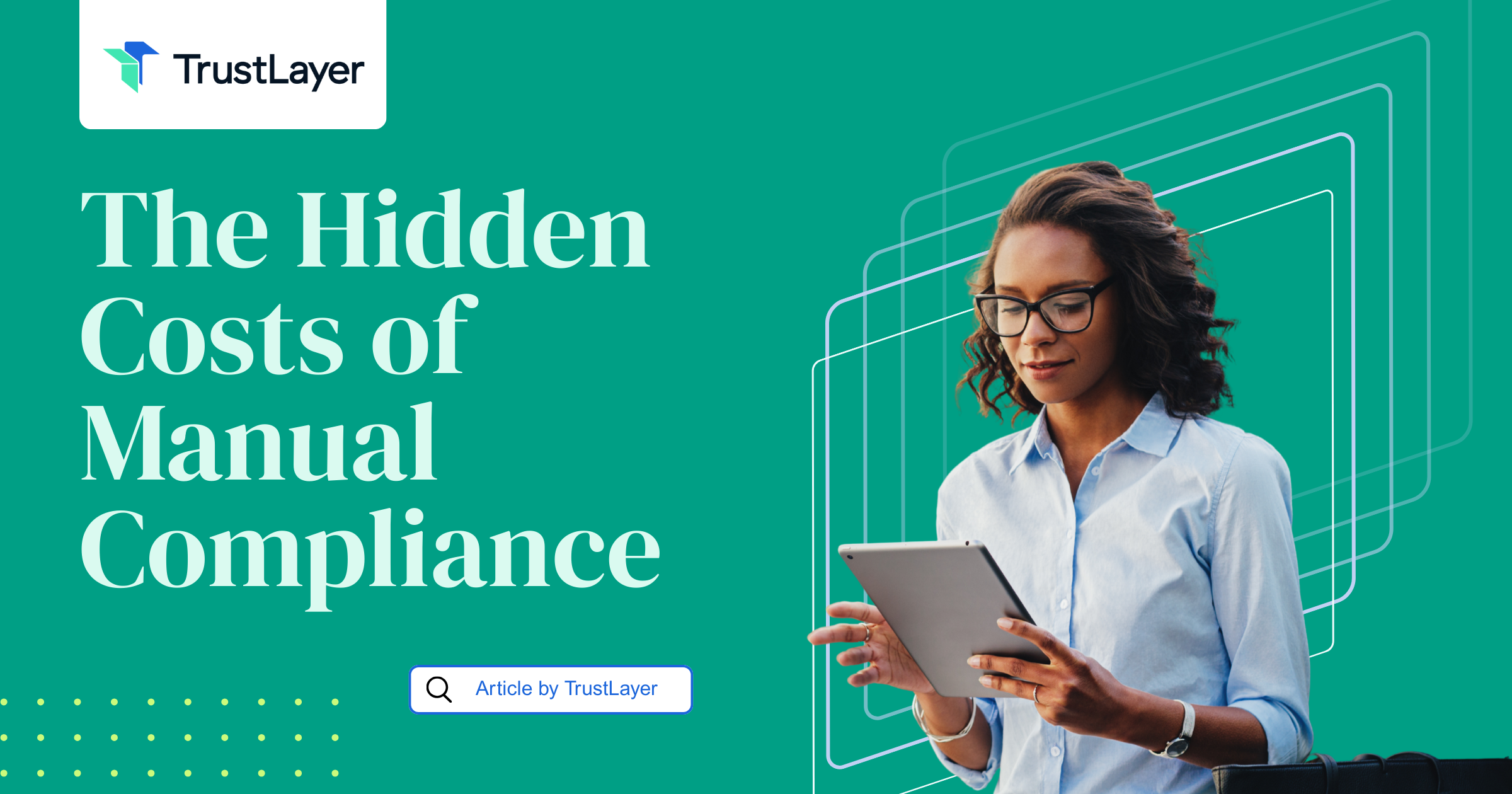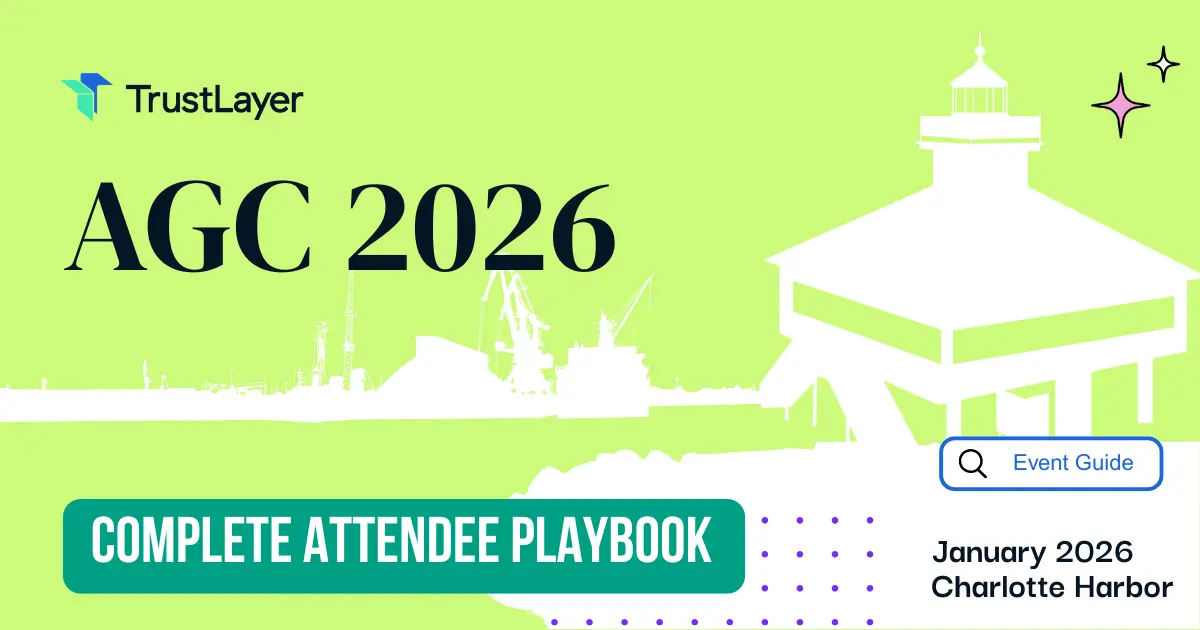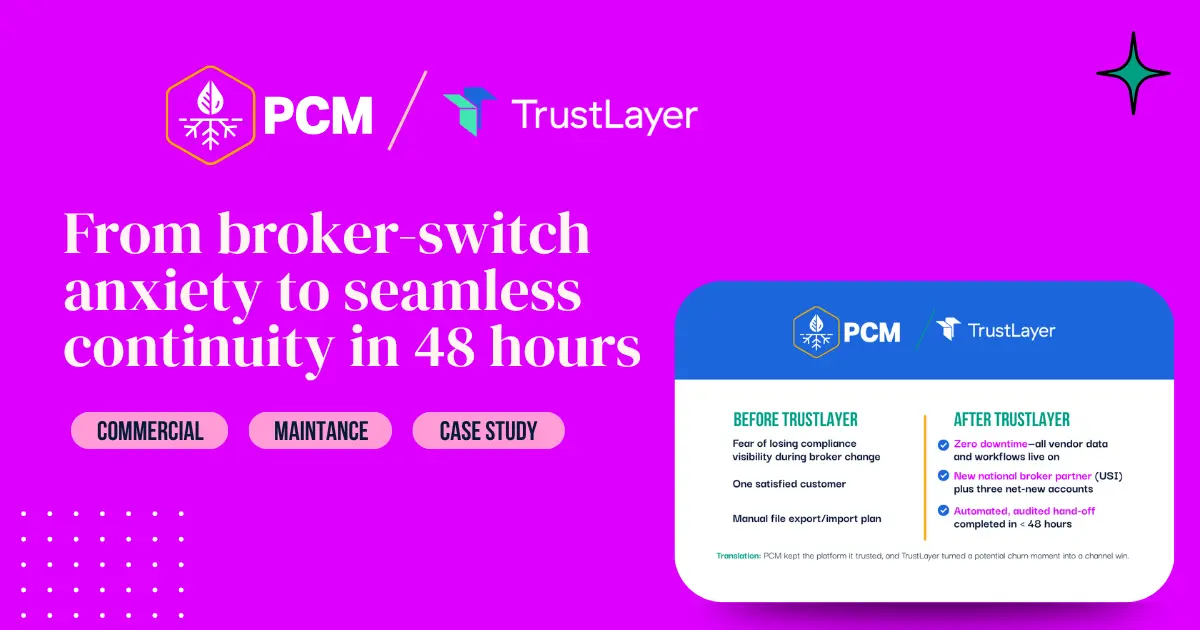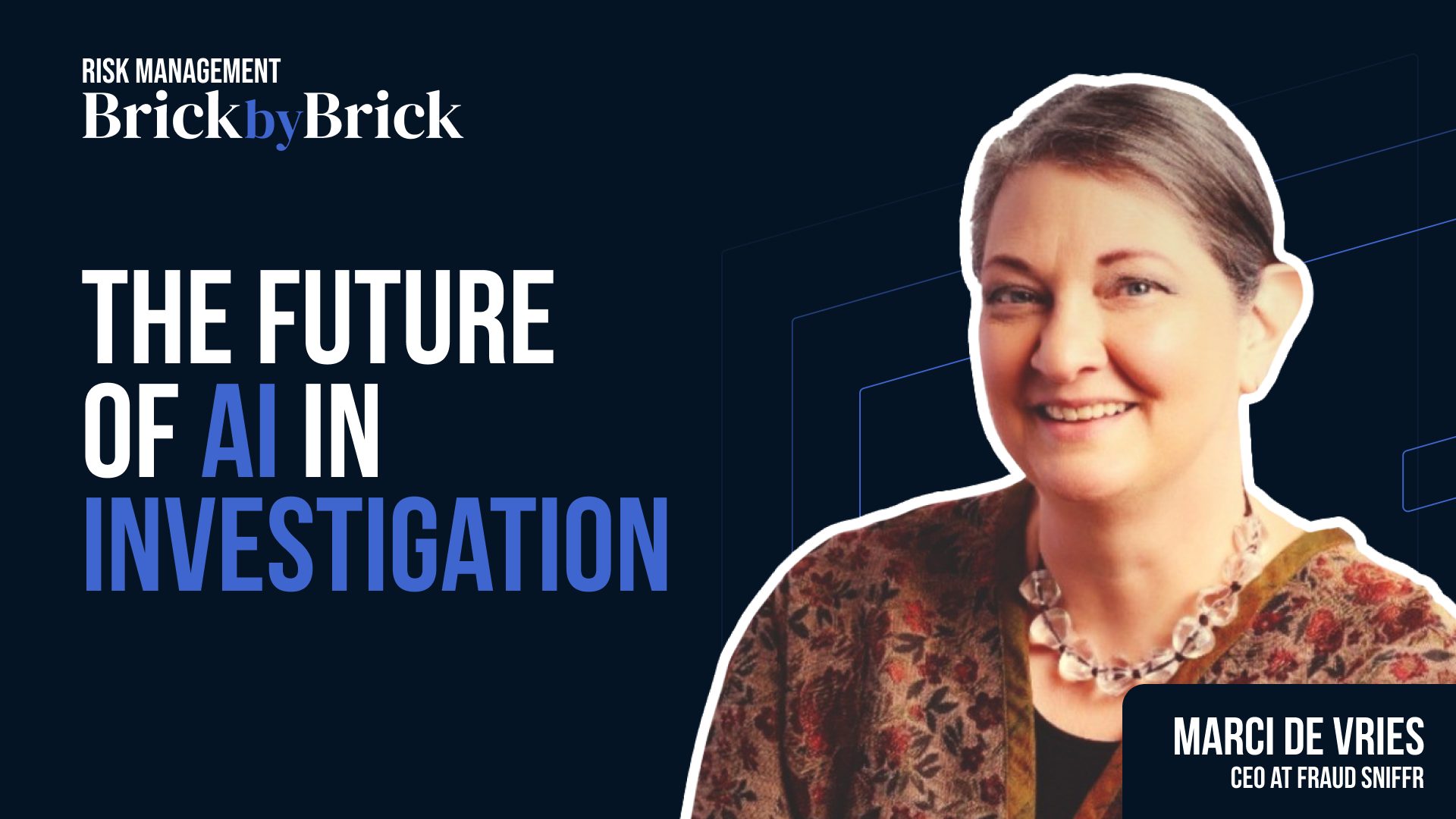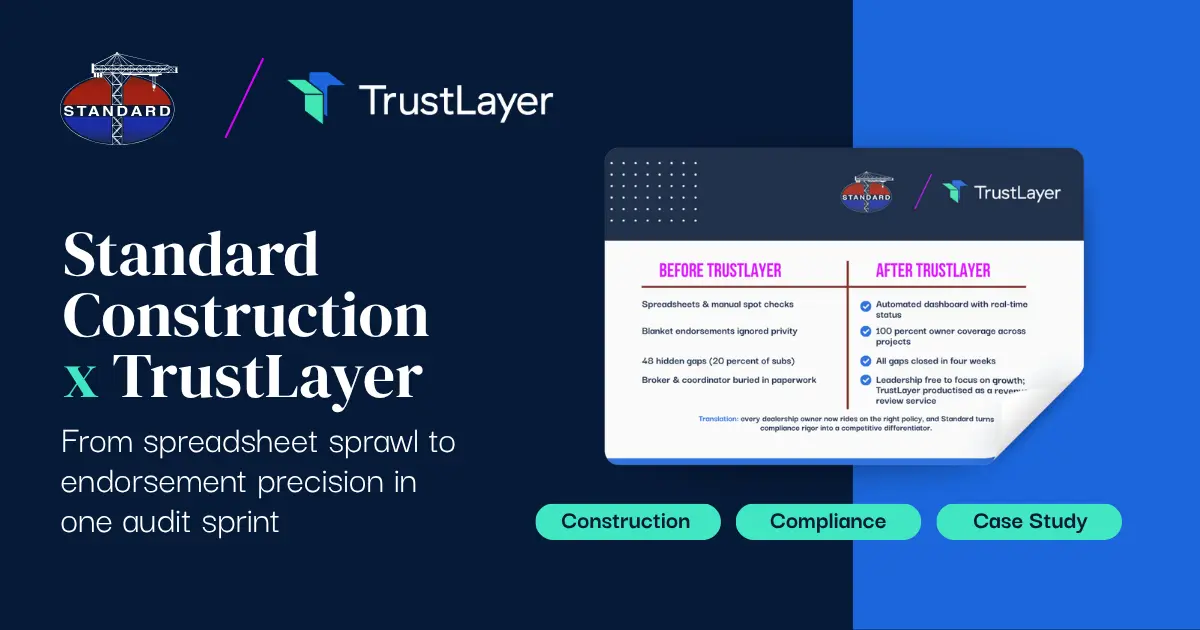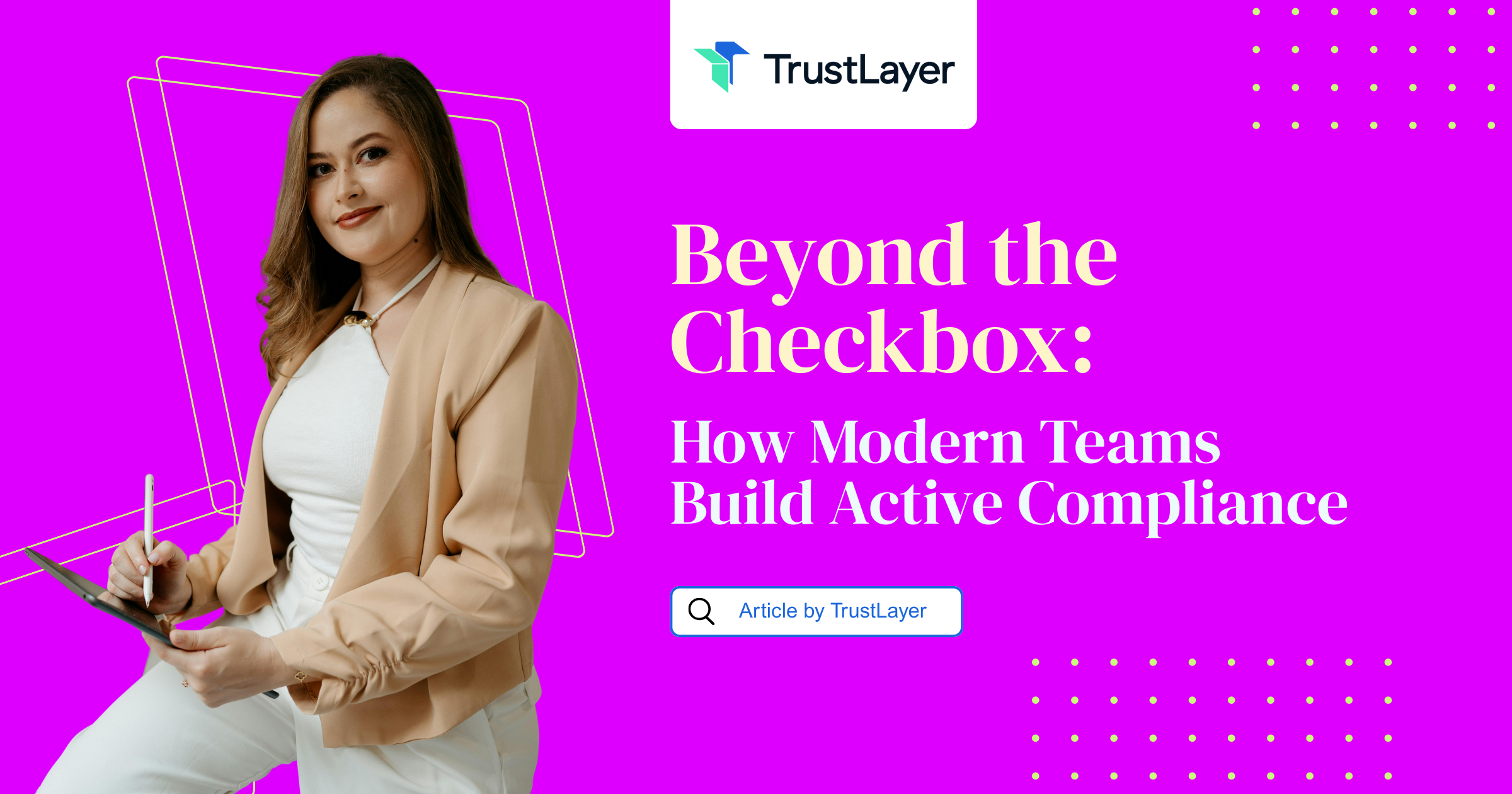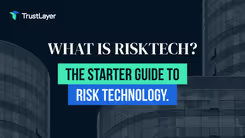Case Study: Varney Capital x TrustLayer
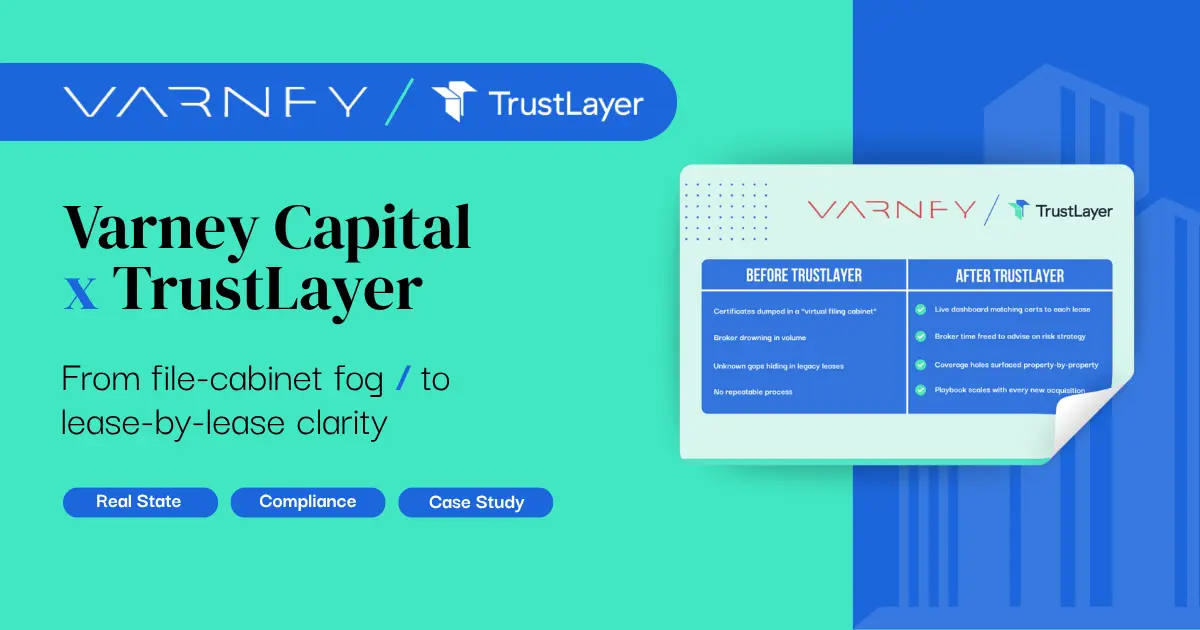
From file-cabinet fog to lease-by-lease clarity in one fast implementation
Why this matters
The risk hiding in real estate portfolios isn’t what’s missing — it’s what’s assumed to be there.
Varney Capital, a lean but fast-growing property investment firm, inherited a thicket of leases every time it acquired a new building.
The paper trail looked complete: COIs filed, boxes checked, broker engaged.
But buried deep in PDFs and email threads were the words that actually mattered clauses, dates, coverage details that could quietly turn a “compliant” tenant into a ticking liability.
What Varney needed wasn’t more paperwork. They needed visibility.
A way to translate the fine print into operational truth without forcing their broker or back office to live inside a spreadsheet purgatory.
Company at a glance
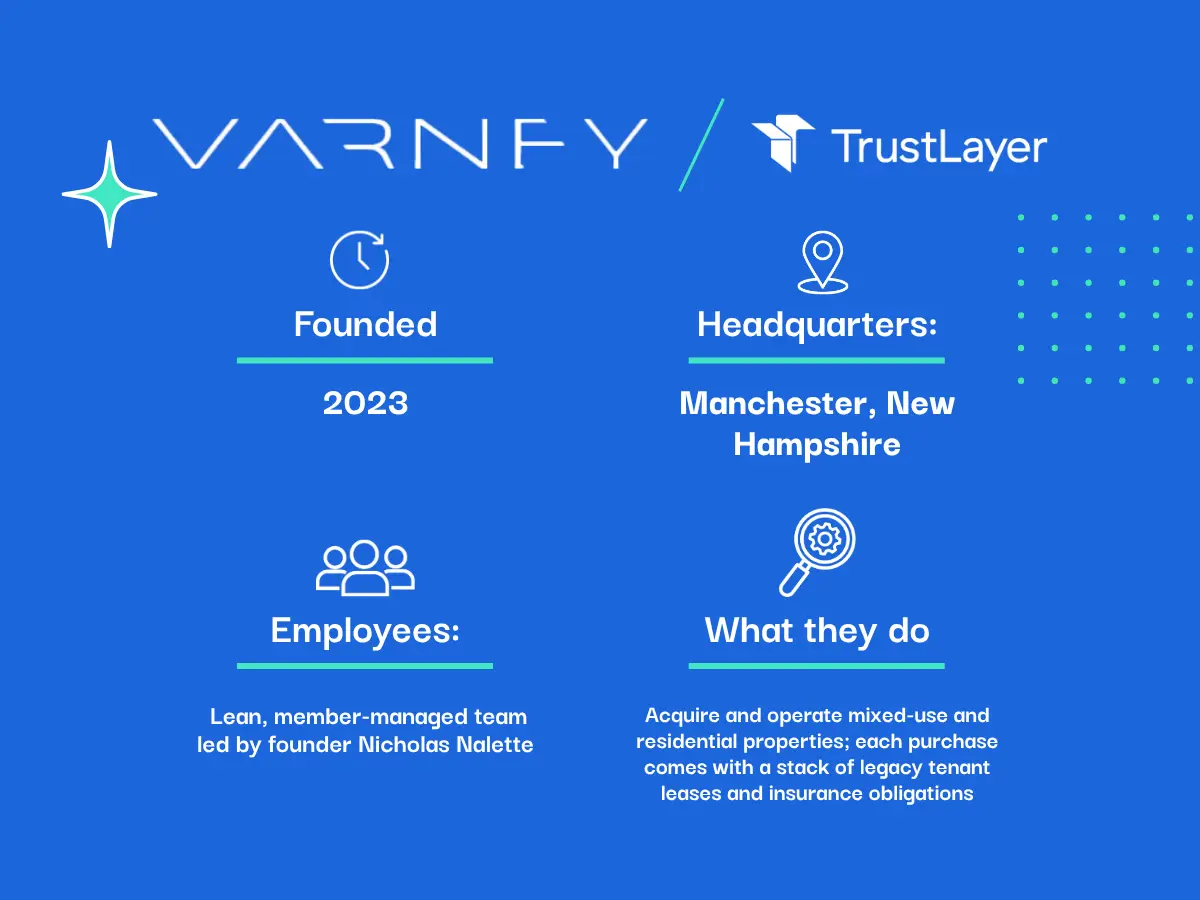
The challenge
Varney’s broker dutifully collected certificates and filed them in digital drawers, but never reconciled them against the lease terms that actually dictated the risk.
Every property came with its own time capsule of language: glass liability here, windstorm exclusions there, “additional insured” wording written before email existed.
Each new acquisition compounded the problem.
Dozens of leases.
Hundreds of certificates. Zero alignment between what the documents said and what the leases required.
In effect, Varney was running a blind trust in its own compliance.
And for an organization that trades in assets worth millions, “we think we’re covered” wasn’t good enough.
The TrustLayer play
1. Lease-specific compliance profiles
TrustLayer’s team built compliance logic directly from Varney’s lease library, mapping clauses, coverage limits, and region-specific exposures into repeatable profiles. Once validated, those templates were cloned across the portfolio.
The result: every tenant’s insurance was evaluated against the correct lease, not a generic checklist.
2. Managed review service for the broker
Instead of the broker drowning in uploads and follow-ups, TrustLayer analysts now review every COI, flag gaps in plain language, and route only actual decision points to the broker. What used to be paperwork became a partnership.
The broker now spends time advising Varney on strategy, not verifying whether an endorsement exists.
3. Portfolio dashboard
The final move was visibility. A clean, color-coded dashboard now displays each property’s compliance posture, lease details, and open exceptions. The entire compliance landscape — once hidden in folders — now fits on one screen.
The payoff
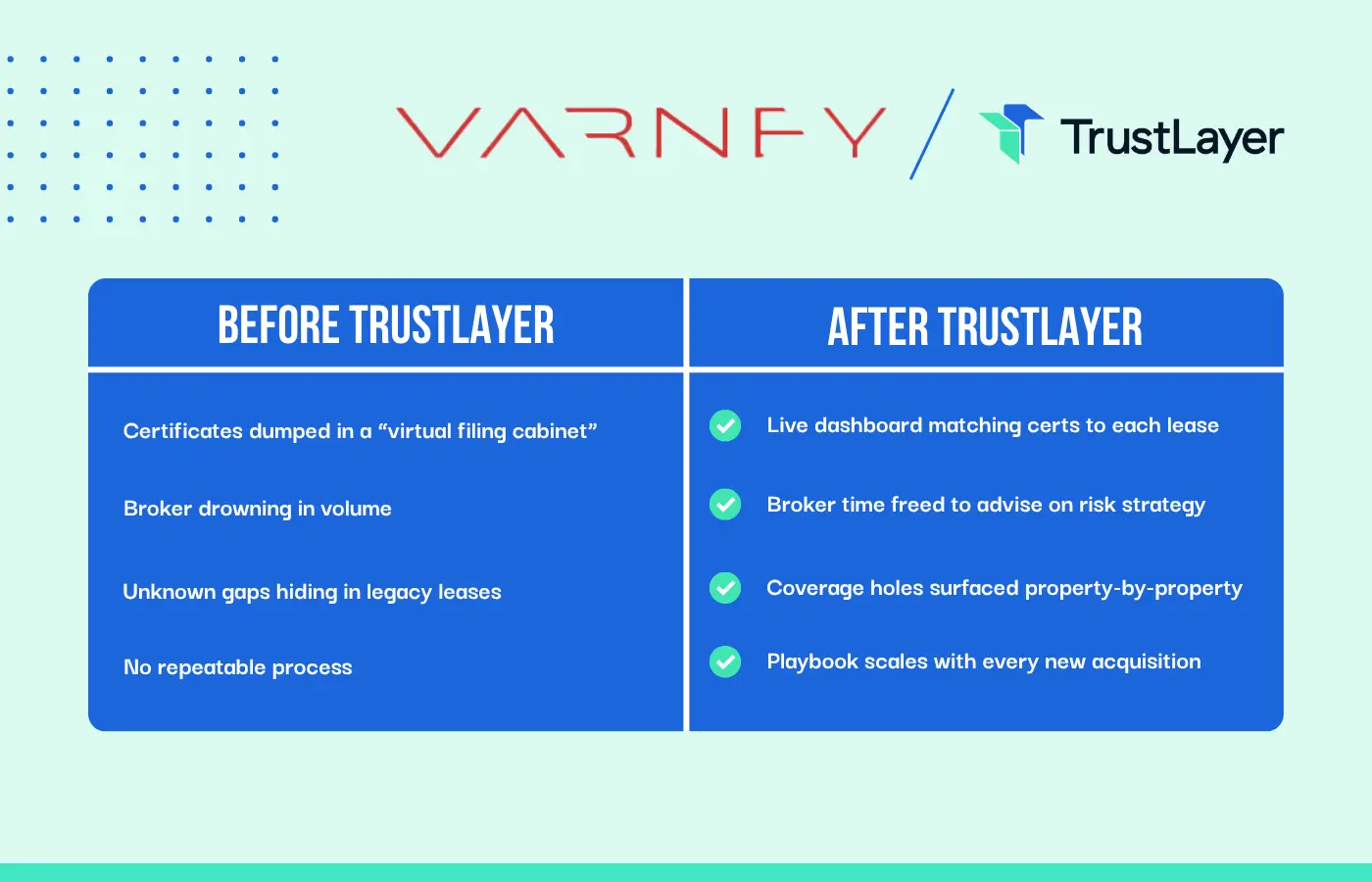
Customer voice
The real story here isn’t about technology, it’s about clarity.
Before TrustLayer, every acquisition brought a new pile of risk wrapped in paper.
After TrustLayer, Varney’s portfolio became something entirely different: knowable.
Lease obligations, once buried in PDFs, now surface as structured data that actually supports better deals and faster decisions.
That shift rippled beyond compliance.
Brokers stopped chasing certificates.
Executives stopped second-guessing coverage. And the same system that protected their property began revealing insights into how to manage future ones.
For Varney, visibility didn’t just clean up the past; it future-proofed every acquisition still to come.
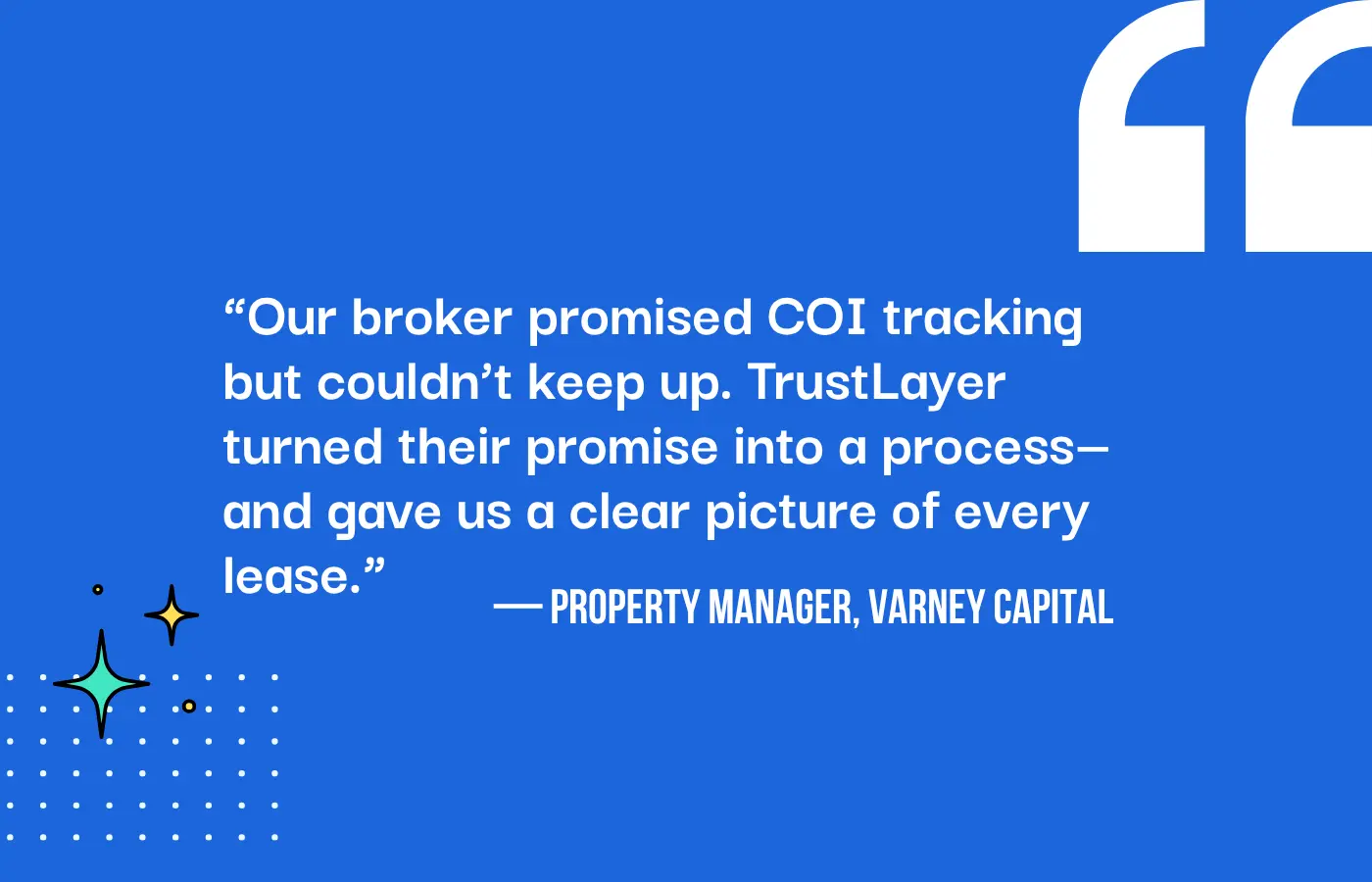
Why this works
Every company says they want automation — but what they really need is continuity.
TrustLayer didn’t ask Varney to reinvent their process; it just amplified it.
The broker still does what brokers do best, the property team still runs acquisitions, and TrustLayer quietly connects the two in real time.
It’s not transformation for transformation’s sake — it’s velocity with verification.
And in a business where every lease clause carries a dollar sign, that’s a serious competitive edge.
Frequently asked questions
Q: What problem did TrustLayer solve for Varney Capital?
Varney’s leases and certificates didn’t align. TrustLayer automated the comparison, surfacing fundamental mismatches instantly.
Q: How long did implementation take?
Roughly four weeks from kickoff to live dashboard — including mapping of all existing leases.
Q: Does TrustLayer replace the broker?
No. It elevates them. Brokers get to focus on strategy while TrustLayer handles the document-heavy lifting.
Q: Can this approach scale with portfolio growth?
Yes. Once profiles are built, every new acquisition simply drops into the system — no rework required.
Q: How is this different from COI tracking software?
COI trackers collect documents. TrustLayer interprets them — and ties them directly to your lease obligations.
Ready for portfolio-wide visibility?
If your certificates still disappear into a digital file drawer, it’s time to see your risk landscape for what it really is.
👉 Book a 15-minute discovery call to turn paper fog into lease-by-lease certainty, before your next property closes.



